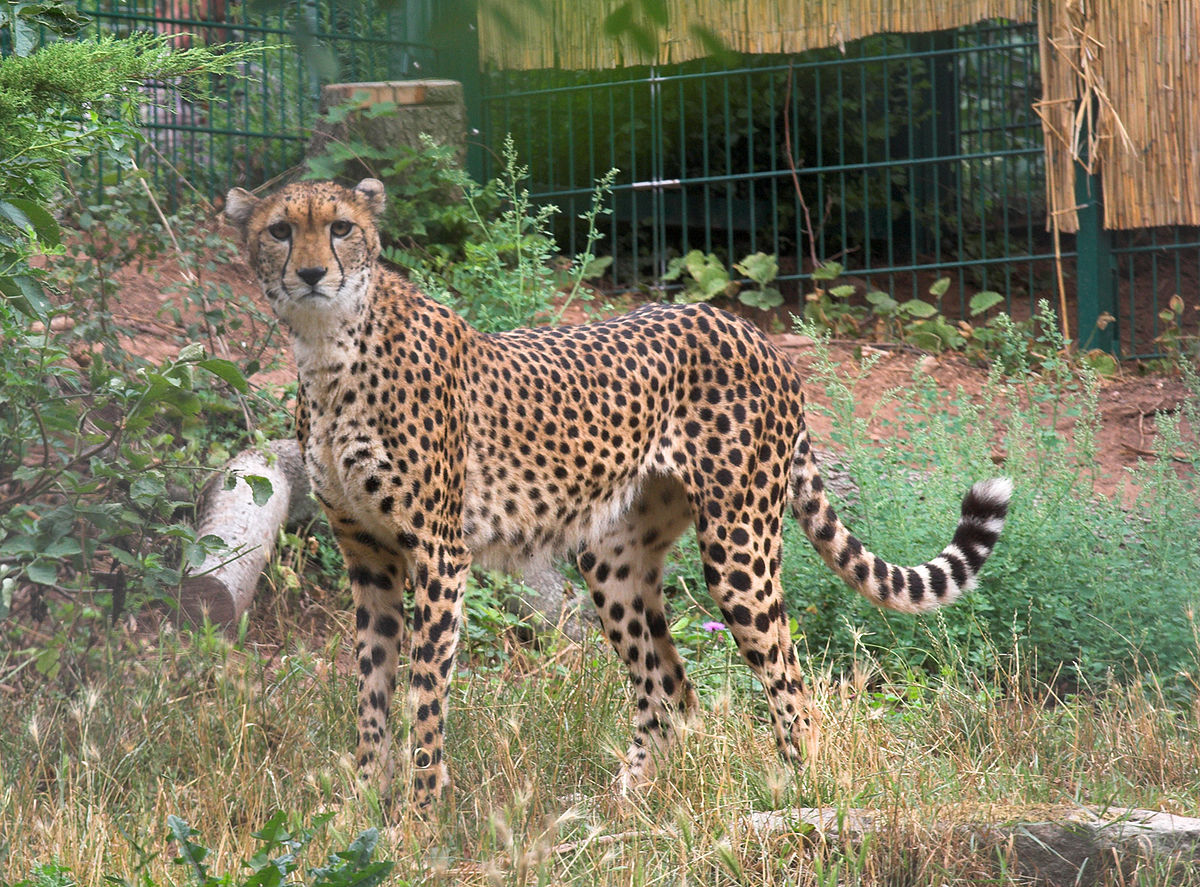
About Northeast African Cheetah:
- It is found in the Horn of Africa.
- It is also known as the Sudan cheetah. This subspecies is more closely related to the Southern African cheetah than to Saharan cheetah populations.
- The cheetah’s long tail helps it keep its balance when changing direction mid-chase. Cheetahs can make even 90-degree turns with ease while sprinting.
- Appearance: Like it’s relative to the south in East Africa, the Northeast African cheetah is fairly large. Physically, it most resembles the East African cheetah.
- Distribution: Contemporary records are known in South Sudan and Ethiopia. These animals live in wide open lands, grasslands, semi-arid areas, and other open habitats where prey is abundant such as in the East Sudanian Savanna.
- Threat: The subspecies’ cubs are being heavily trafficked across the Red Sea to Arab countries like Saudi Arabia, the United Arab Emirates and Yemen.
- Conservation status
- IUCN: Vulnerable

About Wetland City Accreditation:
- The Ramsar Convention during COP12 held in the year 2015 approved a voluntary Wetland City Accreditation system.
- It recognizes cities which have taken exceptional steps to safeguard their urban wetlands.
- It also recognizes the importance of wetlands in urban and peri-urban environments and to take appropriate measures to conserve and protect these wetlands.
- This voluntary scheme provides an opportunity for cities that value their natural or human-made wetlands to gain international recognition and positive publicity for their efforts.
- This scheme aims to further promote the conservation and wise use of urban and peri-urban wetlands, as well as sustainable socio-economic benefits for local populations.
- To be formally accredited, a candidate for WCA should satisfy the standards used to implement each of the six international criteria mentioned in Operational Guidance for WCA of the Ramsar Convention on Wetlands.
- Since Ramsar COP13, 43 cities from 17 countries have been officially recognized as “Wetland Cities”.
The three nominated cities include:
- Indore: Founded by Holkars. Sirpur Lake, a Ramsar Site in the city has been recognised as an important site for water bird congregation and is being developed as a Bird Sanctuary. A strong network of wetland mitras is engaged in bird conservation and sensitising the local community to protect Sarus Crane.
- Bhopal: Bhoj Wetland, Ramsar Site is the city’s lifeline, equipped with the world-class wetlands interpretation centre, Jal Tarang. Additionally, the Bhopal Municipal Corporation has a dedicated Lake Conservation Cell.
- Udaipur: Located in Rajasthan, the city is surrounded by five major wetlands, namely, Pichola, Fateh Sagar, Rang Sagar, Swaroop Sagar, and Doodh Talai. These wetlands are an integral part of the city’s culture and identity, help maintain the city’s microclimate, and provide a buffer from extreme events.
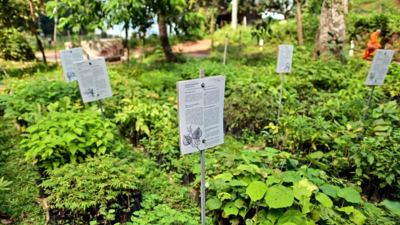
About the New plant species:
- A new plant species named Polygonum Chaturbhujanum has been discovered at Gol Pahadi island of PTR. It is an herb.
- Six plant species endemic to India have also been found in Pench. They are Aegineta indica, Boerhavia crispa, Habenaria gibsonii var foetida, Iphigenia pallida, Petalidium barlerioides and Barleria gibsonii.
Key facts about the Pench Tiger Reserve:
- It is located in the southern reaches of the Satpura hills in the Seoni and Chhindwara districts in Madhya Pradesh and continues in Nagpur district in Maharashtra as a separate Sanctuary.
- It is named after the Pench River, which flows from north to south through the Reserve.
- It comprises of the Indira Priyadarshini Pench National Park, the Pench Mowgli Sanctuary and a buffer.
- Terrain: It is undulating, with most of the area covered by small hills and steep slopes on the sides.
- Vegetation: The undulating topography supports a mosaic of vegetation ranging from a moist, sheltered valley to an open, dry-deciduous forest.
- Flora: Teak, saag, mahua, and various grasses and shrubs etc.
- Fauna: Chital, Sambar, Nilgai, Gaur (Indian Bison) and wild boar, tiger, dogs and wolf.
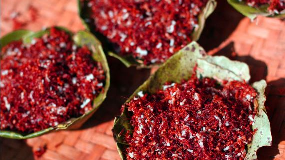
About Similipal Kai Chutney:
- The savoury chutney is popular in Mayurbhanj region for its healing properties and also deemed important for nutritional security of the tribal people.
- Many indigenous people from Mayurbhanj district venture into nearby forest to collect kai pimpudi (red weaver ant).
- Around 500 tribal families have been eking out a living by collecting and selling these insects and a chutney made with them.
- Health benefits:
- The scientists analysed the red weaver ants and found it contains valuable proteins, calcium, zinc, vitamin B-12, iron, magnesium, potassium, sodium, copper, amino acids, among others. Consuming the species can help boost the immune system and prevent diseases.
- The tribal healers also prepare a medicinal oil in which they dip the ants along with pure mustard oil.
- After a month, this concoction is used as body oil for babies and to cure rheumatism, gout, ringworm and other diseases by the tribes.
- The local people also consume this to stay fit and strong.
Key facts about Red Weaver Ants:
- These are indigenous to Mayurbhanj and are found in abundance in the jungles of every block area of the district, including in the Similipal Tiger Reserve, throughout the year.
- They form colonies with multiple nests in trees. Each nest is made of leaves stitched together with the silk produced by their larvae.
- They mostly lodge in trees like mango, sal, jambu and jackfruit. The nests are strong enough against wind and impermeable to water.
- Kai’s nests are usually elliptical in shape and range in size from single small leaf folded and bound onto itself to large nest consisting of many leaves.
- The Kai families consist of three categories of members — workers, major workers and queens. Workers and major workers are mostly orange coloured.

About PRERANA program:
- It aims to offer a meaningful, unique, and inspiring experience to all participants, thereby empowering them with leadership qualities.
- It is driven by a strong commitment to integrate principles of the Indian education system and the philosophy of value-based education which is a cornerstone of the National Education Policy (NEP) 2020.
- It is a week-long residential program for selected students of class IX to XII.
- A batch of 20 selected students (10 boys and 10 girls) will attend the program, every week from various parts of the country.
- It will run from a Vernacular School, established in 1888, in one of the oldest living cities of India, Vadnagar, district Mehsana, Gujarat.
- The curriculum of Prerana School prepared by IIT Gandhi Nagar is rooted in nine value-based themes: Swabhiman and Vinay, Shaurya and Sahas, Parishram and Samarpan, Karuna and Sewa, Vividhta and Ekta, Satyanishtha and Shuchita, Navachar and Jigyasa, Shraddha aur Vishwas, and Swatantrata and Kartavya.
- The day-wise program schedule will feature yoga, mindfulness, and meditation sessions, followed by experiential learning, thematic sessions, and hands-on interesting learning activities.
- Evening activities will include visits to ancient and heritage sites, inspirational film screenings, mission life creative activities, talent shows etc. ensuring a holistic learning approach.
- Apart from this, students will engage in diverse activities, embracing indigenous knowledge systems, latest State-of-Art technologies, and learning from inspirational personalities.
- Selection procedure:
- Students can register through the portal, wherein applicants can fill the requisite details.
- The registered applicants will go through a selection process, as prescribed on the portal.
- Applicants can also join the selection procedure conducted at the School/block level, on designated ‘Prerana Utsav’ day, through various activities.
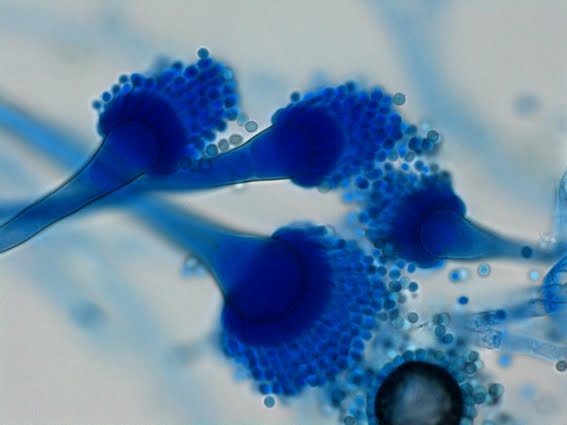
About Aspergillus fumigatus:
- It is a species of fungus that causes diseases in humans.
- It can be found throughout the environment, including in soil, plant matter, and household dust.
- The fungus can also produce airborne spores called conidia. Most people can inhale many of these spores on a daily basis.
- In a healthy individual, the immune system often clears them from the body without a problem. However, for some people, inhaling A. fumigatus, spores can lead to a potentially severe infection.
- Aspergillus fumigatus is considered an opportunistic organism. It has low virulence (ability to cause damage) and causes disease only in some circumstances, like:
- A severely weakened state caused by sickness, poor nutrition, advanced age, etc.
- Immunosuppression by diseases or medicines
- Implants use, such as prosthetic devices
- Illness Caused:
- An infection that’s caused by an Aspergillus species of fungus is referred to as aspergillosis.
- Aspergillus can cause allergic reactions, chronic lung conditions, and an invasive disease that spreads to your brain, kidneys, lungs, or other organs.
- Symptoms:
- The symptoms of aspergillosis vary depending on the type and location of your body.
- Symptoms of infections or allergic reactions in your lungs are the most common. They include:
- Coughing (sometimes coughing up blood).
- Shortness of breath (dyspnea).
- Noisy breathing (wheezing).
- Chest pain.
- Fever
- Fatigue and weight loss can be symptoms of chronic pulmonary aspergillosis.
- Treatment: Treatments include surgery and antifungal medications.

About ‘Workation’ Visa:
- The "workation" or "digital nomad" visa allows foreign nationals to visit South Korea on a working holiday.
- Eligibility:
- Foreign nationals with an annual income twice as much as South Korea's per capita gross national income will be eligible to apply for the visa.
- It will be given to those having a work experience of over a year in one industry and are eligible for remote work.
- Moreover, the applicants must also have medical insurance of over 100 million won (₹63,62,655.45) and must cover medical treatment and repatriation fees.
- The visa will also be allowed to the families of these employees.
- The visa, which is valid for a year and renewable for up to two years, can be issued at South Korean embassies, and those currently residing in the country under a temporary visa can also apply for it if they meet the requirements. (Currently, foreign nationals interested in working and travelling in Korea need a tourist visa, which is limited to stays of less than 90 days).
- The people who are awarded this visa cannot be hired by any company in South Korea to work or undertake any profit-making activity.
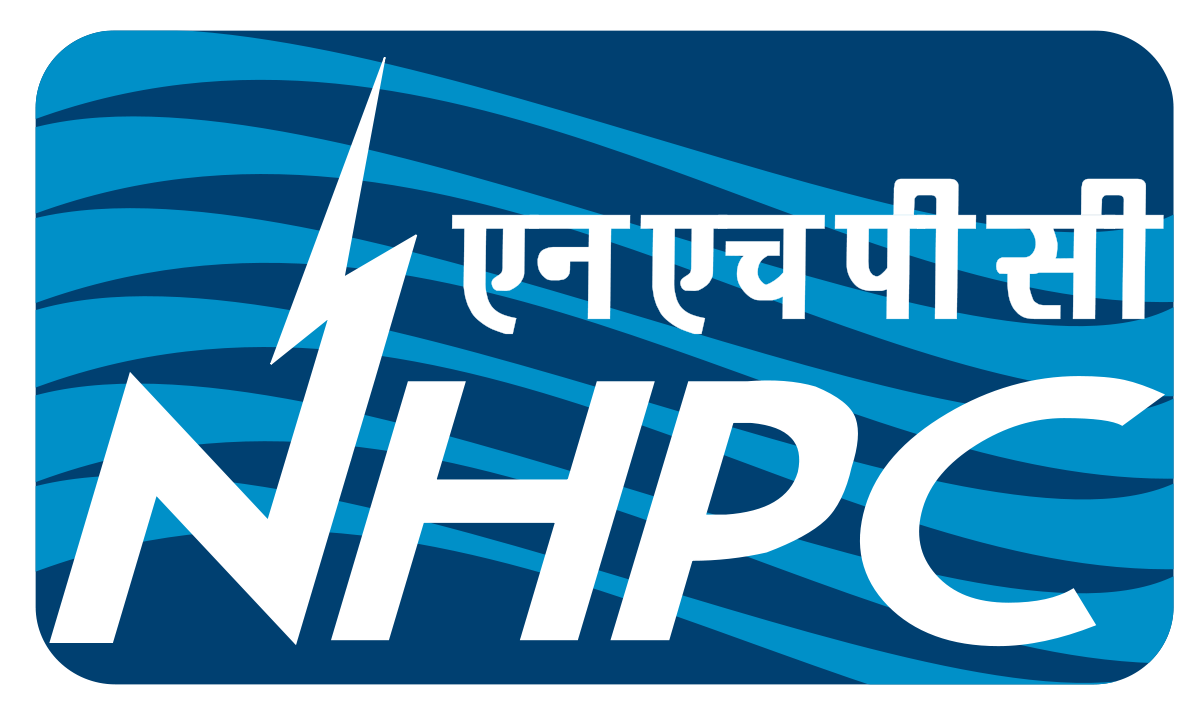
About the NHPC Limited:
- NHPC Limited (formerly known as National Hydroelectric Power Corp.) is a Government of India Mini Ratna Category-I Public Sector Enterprise under the Ministry of Power.
- It was incorporated in the year 1975 under the Companies Act, 1956, with the objective of developing hydroelectric power in the country.
- With an authorised share capital of Rs.15,000 crore. NHPC is a premier organisation in the country for the development of hydropower.
- The company is mandated to plan, promote, and organise an integrated and efficient development of power in all aspects through conventional and non-conventional sources in India and abroad.
- NHPC is headquartered in Faridabad, Haryana.
- The main functions of the NHPC include
- Planning, execution, operation, and maintenance of hydroelectric power projects
- Exploring new sites for hydroelectric projects
- Development of small hydroelectric projects
- Research and Development (R&D) in the field of hydroelectric power
- Through long-term power purchase agreements, it sells electricity to utilities owned by state governments/private distribution companies on a wholesale basis.
- It also carries out business operations, which include the planning of wind and tidal wave projects in the country, and has interests in various projects in the construction and under development phases.

About Photocatalyst:
- The term photocatalyst is a combination of two words: photo, related to photon, and catalyst, which is a substance altering the reaction rate in its presence.
- Therefore, photocatalysts are materials that change the rate of a chemical reaction upon exposure to light. This phenomenon is known as photocatalysis.
- The illumination of the catalyst causes the generation of free charges (electrons and holes) that can participate in chemical reactions, altering the reaction rate.
- Photocatalysis includes reactions that take place by utilising light and a semiconductor. All the photocatalysts are basically semiconductors.
- There are various materials that show photocatalytic capability, and titanium dioxide (TiO2) is said to be the most effective.
- The photocatalytic reactions can be categorised into two types based on the appearance of the physical state of the reactants.
- Homogeneous photocatalysis: When both the semiconductor and reactant are in the same phase, e. gas, solid, or liquid.
- Heterogeneous photocatalysis: When both the semiconductor and reactant are in different phases.
- It is valuable for applications like air and water purification, self-cleaning surfaces, and even in some aspects of solar energy conversion.

About Graphene:
- Graphene is a one-atom-thick layer of carbon atoms arranged in a hexagonal lattice.
- It is the building-block of Graphite (which is used, among other things, in pencil tips).
- It was first isolated in 2004.
- Properties:
- Graphene is the world's thinnest material; it is only one atom thick, one million times thinner than human hair.
- However, it is very strong, stronger than steel and diamond.
- It is an excellent conductor of heat and electricity. It conducts electricity better than copper.
- It is almost perfectly transparent, as it absorbs only 2% of light.
- It is impermeable to gases, even those as light as hydrogen and helium.
- Applications:
- Mechanical strength: It can be used to enhance the strength of other materials.
- Thermal applications:
- It is a great material for making heat-spreading solutions, such as heat sinks or heat dissipation films.
- This could be useful in both microelectronics (for example, to make LED lighting more efficient and longer-lasting) and in larger applications, for example, thermal foils for mobile devices.
- Energy storage:
- Since graphene is the world's thinnest material, it also has an extremely high surface-area-to-volume ratio. This makes graphene a very promising material for use in batteries and supercapacitors.
- Graphene may enable batteries and supercapacitors(and even fuel cells) that can store more energy and charge faster, too.
- It has a lot of promise for additional applications: anti-corrosion coatings and paints, efficient and precise sensors, faster and more efficient electronics, flexible displays, efficient solar panels, faster DNA sequencing, drug delivery, and more.


























































































































































.png)
.png)
.png)
.png)
.png)


.png)
.png)
.png)





.png)
.png)






.png)
.png)
.png)
.png)
.png)
.png)
.png)
.png)
.png)

.png)







.png)
.png)


.png)
.png)
.png)


.png)

.png)
.png)





.jpg)

.png)
.png)


.png)

.png)
.png)
.png)

.jpg)

.jpg)


.png)

.png)
.png)
.png)
.png)
.png)
.png)
.png)
.png)
.png)
.png)




.png)

.png)





.png)
.png)
.png)
.png)
.png)
.png)
.png)
.png)
.png)
.png)
.jpg)
.jpg)

.png)
.png)
.png)
.png)
.png)
.png)
.png)
.png)
.png)
.png)
.png)
.png)
.png)
.png)
.png)
.png)
.png)
.png)
.png)
.png)
.png)
.png)



.png)
.png)

.jpg)
.jpg)


.jpg)
.jpg)
.jpg)
.jpg)
.jpg)

.jpg)








.jpg)
.jpg)
.jpg)
.jpg)
.jpg)

















.jpg)
.jpg)







.jpg)


















.jpg)
.jpg)






























































































.jpg)
.jpg)


























.jpg)

.jpg)










.jpg)








.jpg)




.jpg)










.jpg)


















.jpg)












































.jpg)














.jpg)
.jpg)
.jpg)





.jpg)

.jpg)
.jpg)





































































.jpg)


































.jpg)
.jpg)
















































.jpg)












.jpg)


.jpg)




.jpg)
.jpg)
.jpg)

.jpg)
.jpg)
.jpg)
.jpg)

.jpg)
.jpg)
.jpg)

.jpg)
.jpg)
.jpg)
.jpg)
.jpg)
.jpg)
.jpg)
.jpg)

.jpg)


.jpg)
.jpg)
.jpg)
.jpg)
.jpg)
.jpg)
.jpg)
.jpg)
.jpg)
.jpg)











.jpg)
.jpg)





.jpg)
.jpg)
.jpg)
























.jpg)
























.jpg)









.jpg)
.jpg)







.jpg)
.jpg)









































.jpg)
.jpg)
.jpg)
.jpg)
.jpg)

.jpg)
.jpg)
.jpg)
.jpg)
.jpg)


.jpg)
.jpg)
.jpg)
.jpg)
.jpg)

.jpg)
.jpg)
.jpg)
.jpg)
.jpg)
.jpg)
.jpg)
.jpg)
.jpg)
.jpg)
.png)

.png)
.png)

.png)
.png)
.png)
.png)


.jpg)
.jpg)

.jpg)
.jpg)
.jpg)

.png)
.png)
.png)
.png)
.png)
.png)
.png)

.png)
.png)
.png)
.png)
.png)
.png)
.png)
.png)
.png)
.png)





































































-min.png)



.png)




.png)








































